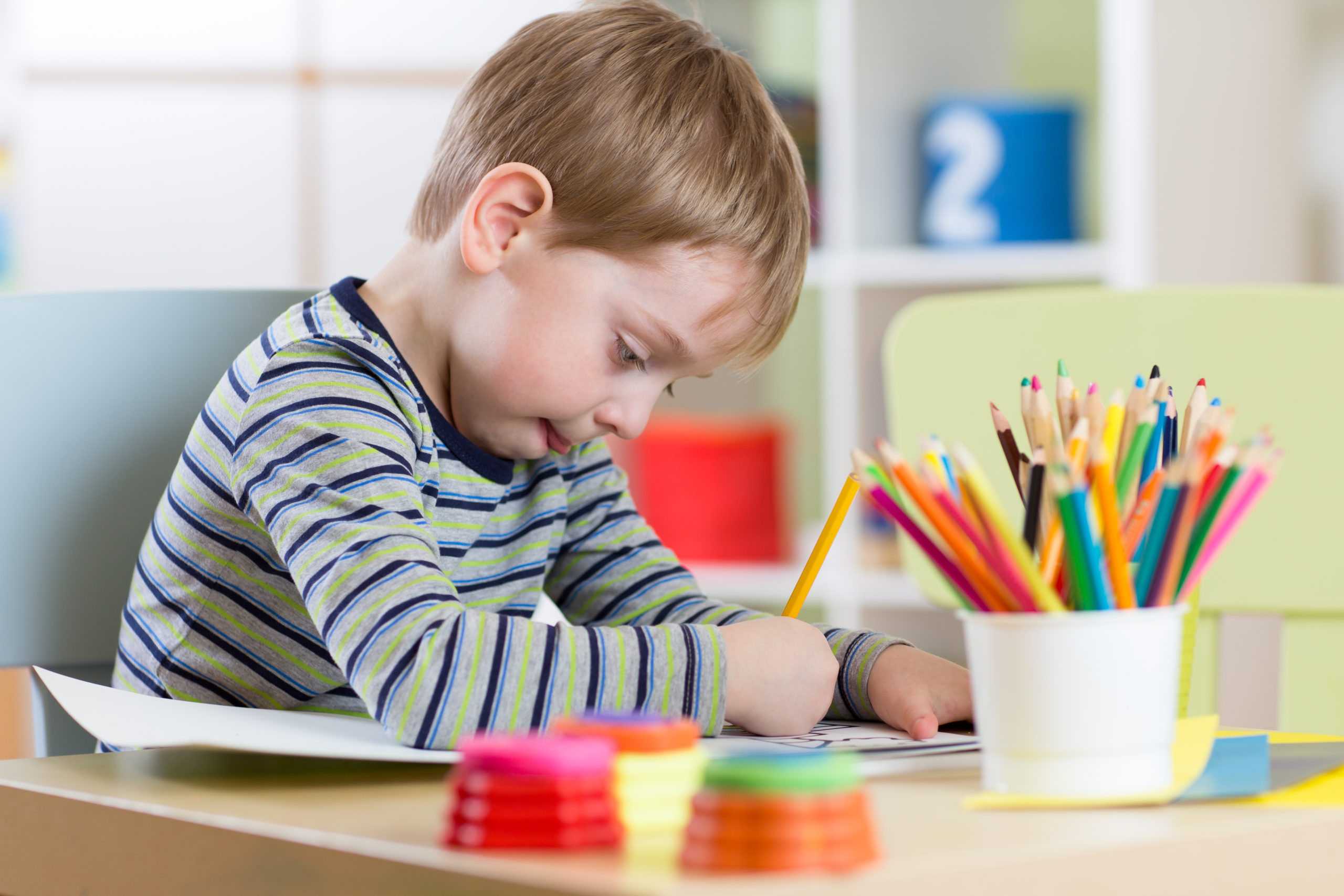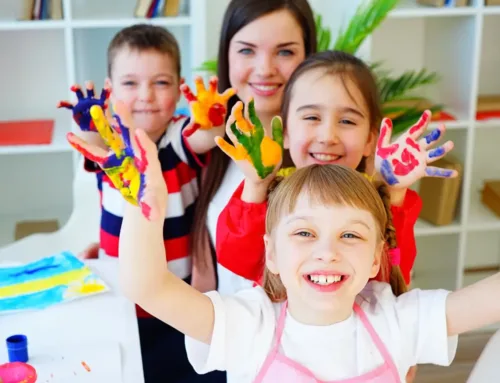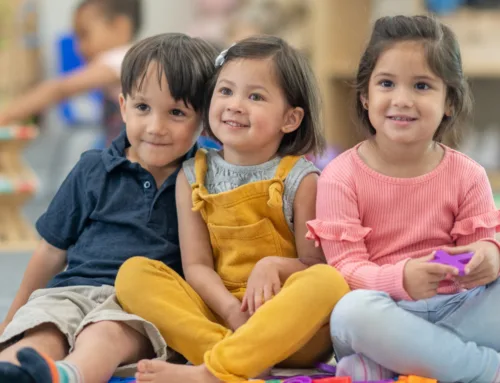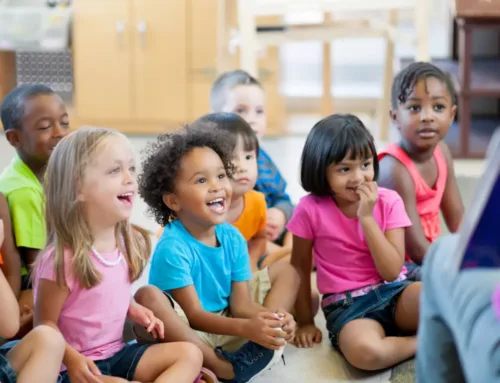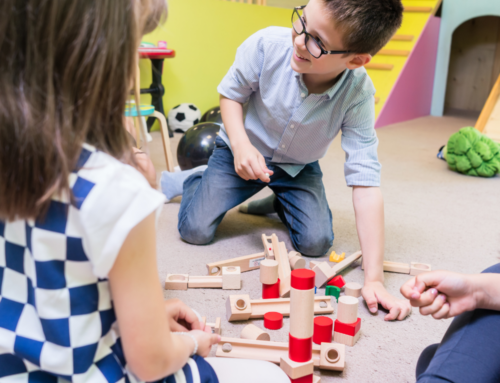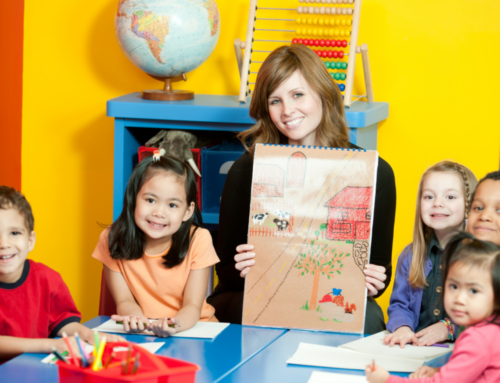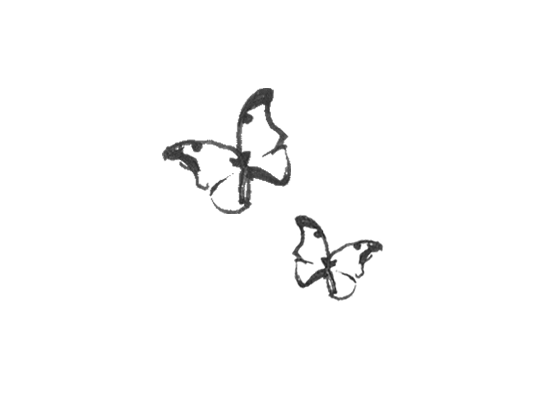Patterns come in many forms at the preschool level, but preschoolers don’t always notice the repeating elements. Pattern lessons help young learners focus on details. An understanding of patterns builds a math foundation that enables students to recognize number patterns and find repeating elements. Here are some ways to teach your preschooler about patterns:
Patterns In The Classroom
When teaching patterns, intentionally incorporate them into the classroom. Your preschool calendar is an easy place to start. Write the numbers for the calendar on cutouts to make a pattern. You might alternate stars, hearts and circles, for example. As you add the number to the calendar each day, build the pattern with the shapes. You can also add patterning through decorations you hang on the wall, the way you arrange furniture and carpet squares on the floor.
Building Patterns
Preschoolers get a hands-on lesson on patterning when they create their own. Cut out shapes from construction paper to create the parts of the patterns. Start with a simple A-B pattern. An example is alternating squares and circles or alternating two different colors of squares. The preschoolers arrange the paper cutouts to create the repeating pattern. Add complexity to the pattern, such as making an A-A-B-B or A-B-B pattern. When preschoolers gain competency, let them come up with their own patterns.
Pattern Search
A pattern search around the school or neighborhood encourages preschoolers to notice the repeating parts. In the classroom, students might have patterns on their clothes, either with repeating shapes or colors. Other potential patterns include tiles on the floor, spindles on a stair railing or game boards. Head outdoors for additional pattern spotting, such as colors on the playground equipment, fence posts, shrubs in the landscaping or ridges on tires. As the preschoolers look at the patterns, have them choose one of the patterns they see and draw it. A child might draw the stripes on a classmate’s shirt, for example. Let each child share his picture and describe the pattern he found.
Other Types of Patterns
Patterns don’t have to be visual. Sound patterns give preschoolers an alternative way to recognize repeating elements. Musical instruments give preschoolers a chance to create their own sound patterns. A group of kids might alternate between hitting a drum, shaking a tambourine and blowing a whistle. Or create a sound pattern and have the kids repeat. Kids’ songs often have patterns in the form of repeated musical notes or lyrics. Play a song and have the preschoolers identify the parts of the song that repeat to create a sound pattern. The same idea works for movements. Repeat actions to create a pattern. You might have the kids hop, clap, hop, clap, hop and clap to create a movement pattern, or teach the kids a dance with a few dance moves that continue repeating throughout a song.
At Precious Memories Preschool of Sandy Hollow PreSchool of Sandy Hollow, we offer a special place for children to not only grow and develop along the way, but a place for them to CELEBRATE each and every step. If you are interested in enrolling your child in our program please fill out the form on this page or call us at 860.572.9958

